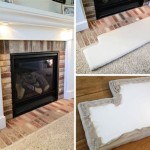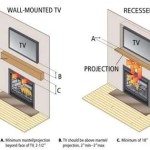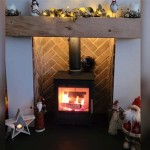How To Install a Wood Burning Fireplace Blower
A wood-burning fireplace offers warmth and ambiance, but a significant portion of the heat generated often escapes up the chimney. A fireplace blower, also known as a fireplace fan, can significantly improve heat distribution by circulating warm air into the room. Installing a blower is a project that can be undertaken by a homeowner with basic mechanical skills and tools, providing a more efficient and comfortable heating experience.
This article provides a comprehensive guide on how to install a wood-burning fireplace blower. Careful attention to safety precautions, proper selection of the right blower, and following installation steps systematically are crucial for a successful outcome. Before commencing any work, consulting the fireplace and blower manufacturer's instructions is highly recommended.
Selecting the Right Fireplace Blower
The first step involves choosing a blower compatible with the specific fireplace make and model. Fireplace blowers are not universal; they are designed to fit specific firebox dimensions and airflow requirements. Installing the wrong blower can result in inefficient operation, overheating, or even damage to the fireplace or blower unit.
To select the appropriate blower, locate the fireplace's model number. This is typically found on a metal plate or sticker inside the firebox, often near the damper or on the side walls. Once the model number is identified, consult the fireplace manufacturer's website or contact a fireplace retailer to determine the compatible blower models. Alternatively, some fireplace blower retailers offer search tools that allow users to input their fireplace model to find compatible blowers.
When selecting the blower, consider the blower's cubic feet per minute (CFM) rating. This indicates the volume of air the blower can move. A higher CFM rating is generally preferable for larger rooms or fireplaces, ensuring adequate heat circulation. However, ensure the CFM rating is within the recommended range for the specific fireplace model to avoid overworking the unit or creating excessive noise.
Also consider the blower's noise level. Some blowers are quieter than others. If noise is a concern, look for models with noise-dampening features or a lower decibel rating. Reading online reviews can offer insight into the real-world noise levels of different blower models.
Preparing for Installation
Prior to commencing the installation process, gather the necessary tools and materials. This typically includes a screwdriver (both Phillips head and flathead), a wire stripper/crimper, electrical tape, wire connectors (such as wire nuts), a vacuum cleaner, safety glasses, gloves, and potentially a flashlight. Verify the new blower kit includes all the necessary components, such as mounting hardware and wiring instructions. If the blower is not pre-wired with a power cord, acquire an appropriate power cord with a grounded plug.
Safety is paramount. Ensure the fireplace is completely cold before starting any work. Disconnect the power to the fireplace by turning off the circuit breaker that supplies power to the unit. Double-check that the power is off by using a non-contact voltage tester. Clear the area around the fireplace to provide ample workspace.
Clean the firebox thoroughly with a vacuum cleaner. Remove any ash, soot, or debris that could interfere with the blower installation or airflow. This will also improve the efficiency of the blower and reduce the risk of dust and allergens being circulated into the room.
Installing the Fireplace Blower
Carefully review the installation instructions provided with the blower kit. These instructions will provide specific guidance for the particular fireplace model and blower unit. The general steps outlined below may vary depending on the specific design of the fireplace and blower.
Most fireplace blowers are designed to slide into a designated space beneath or behind the firebox. Locate this space, which may require removing a lower panel or grate. The blower may be secured with screws, clips, or brackets. Align the blower with the mounting points and secure it according to the manufacturer's instructions. Ensure the blower is firmly in place and does not vibrate excessively.
Wiring the blower involves connecting the blower's motor to a power source. If the blower is pre-wired, simply route the power cord to a nearby outlet. If the blower requires wiring, use the wire stripper/crimper to prepare the wires, and connect them using wire connectors, following the wiring diagram in the installation instructions. Typically, this involves connecting the hot (black), neutral (white), and ground (green) wires. Ensure all connections are secure and properly insulated with electrical tape.
If the blower has a variable speed control, it is typically mounted on the fireplace's faceplate or in an accessible location. Connect the speed control according to the blower's wiring diagram. Ensure the control is securely mounted and easily accessible for operation.
Once the blower is installed and wired, carefully inspect all connections to ensure they are secure and properly insulated. Replace any panels or grates that were removed during the installation process. Double-check that all tools and materials have been removed from the firebox.
Restore power to the fireplace by turning on the circuit breaker. Test the blower by turning it on and adjusting the speed control. Observe the airflow to ensure the blower is functioning correctly. Listen for any unusual noises or vibrations. If any problems are detected, immediately turn off the power and troubleshoot the issue, referring to the installation instructions or contacting a qualified technician if necessary.
Regular maintenance is crucial to ensure the blower operates efficiently and safely. Periodically clean the blower blades and motor with a vacuum cleaner to remove dust and debris. Inspect the wiring for any signs of damage or wear. If any issues are detected, address them promptly to prevent further damage or safety hazards.

Installing A Fireplace Blower Gfk4 Gfk4a In Heatilator Natural Gas

Fireplace Efficiency Blowers And Why You Should Have One

Why Should I Get A Fireplace Blower For My Masonry

How To Replace Your Fireplace Blower Do Done

How Is A Fireplace Blower Kit Wired Fireplaceblowers Com

How To Replace Your Rsf Fireplace Blower Fan

How Does A Fireplace Blower Work Learn About Blowers

Fbk 250 Fireplace Blower Kit Installation

Fireplace Blower Fans What You Need For Heat Full Service Chimney

Fireplace Blower Fans What You Need For Heat Full Service Chimney
Related Posts








